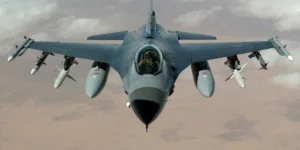Military spending is a perennial hot topic. Some people believe the U.S. military should be granted unlimited funds to maintain the nation’s security. Others believe military spending could be more efficient and should be reduced.
People on both sides present logical arguments in support of their opinion, but it’s unwise to argue the subject from either side without understanding the true cost of even basic military equipment. Military equipment isn’t cheap.
Aside from the cost of machinery, vehicles, and supplies, it costs an average of $17,500 just to equip a single soldier. During World War II, that cost was only $170. Even taking inflation into account, that’s a substantial rate hike.
Despite the exorbitant cost of maintaining a technologically advanced defense system, many people still insist the military budget should be drastically cut.
Should citizens be allowed to have an opinion on the military budget? Anyone can express an opinion, but a fuller understanding of the budget and why it’s so massive might alter at least some opinions.
The humble beginnings of the military
On September 29, 1789, Congress officially created the United States military. It was the last day of the first session of Congress.
Although the Continental Army had fought the British under General George Washington, many felt the new nation required an official army. Washington first began to urge Congress to establish an official army of the states on August 7, 1789, and the bill was passed on September 29.
Washington had to submit multiple reminders to get Congress to establish an official U.S. military. In a letter to the Senate and House of Representatives, the hero of the Revolution reminded them that the honor, safety, and well-being of the country depend on possessing an official military, which holds true to this day.
Maintaining the security and well-being of the country in the 1700s looked considerably different from the way it does today. After the invention of computers, protecting and defending the U.S. has been transformed into a quest to improve electronic technology.
A complex amount of engineering goes into the software used by the military today. For instance, the armed forces rely on electronic warfare to combat threats.
The technology consists of systems that execute rapid detection, identification, tracking, missile warnings, threat analysis, and threat management. Any aircraft that lacked this technology would be crippled.
These high-tech systems are delivered by firms that invest billions of dollars in research and development, and millions on manufacture. These systems are installed in military planes and ground vehicles as a primary tool of threat detection. To lack such technology would mean not being able to detect a threat until it’s too late.
As of August 2018, estimated military spending is $892 billion
If you’ve wondered why the military has an enormous budget, it’s not necessarily for frivolous spending. There are four components to the military’s budget.
First, there’s a $616.9 billion base budget for the Department of Defense. Next, $69 billion is dedicated to overseas operations to fight the Islamic State group.
The third component covers all the agencies that protect the U.S. These include the Department of Veterans Affairs ($83.1 billion), the State Department ($28.3 billion), Homeland Security ($46 billion), FBI and Cybersecurity in the DOJ ($8.8 billion), and the National Nuclear Security Administration in the DOE ($21.9 billion).
The final component is $18.7 billion in OCO funds reserved for the State Department and Homeland Security to fight ISIS.
Technology runs those hunks of metal in the sky
F-15 fighter jets and other military aircraft aren’t simple hunks of metal that’s welded together. They’re powered by highly intelligent software systems that involved countless hours of engineering to create … and those systems cost money.
The military doesn’t get a free ride. The various departments of the armed services must pay for the technology they use. Most of the time, programmers are hired specifically to create software programs for military use. Their expertise commands a higher salary than someone you’d find on Fiverr.
Even basic equipment used by the military is of top-notch quality. Soldiers can’t afford to have equipment fail for no reason on the battlefield. They can’t just head to Amazon and buy a new sleeping bag if the zipper rips in the middle of winter.
Apart from personal supplies, each military plane can cost billions. Then there’s the cost of weapons and advanced technologies the military can’t talk about in detail.
The DoD’s hands are tied
Although not everyone will agree on levels of military spending, everyone should be aware that the issue is more complex than revamping a household budget. For example, the DoD is operating with 21% excess capacity in all its facilities.
There’s an obvious need to close unnecessary military bases to lower that number. But that’s not the DoD’s fault. The department wants to save money, but Congress won’t allow it to close bases. The Bi-Partisan Budget Act of 2013 blocked all future military base closings in order to save local jobs.
The issue of military spending will remain a hot topic for years to come. It’s difficult not to hold an opinion, but with any controversial subject, learning the facts can help you develop an informed point of view that might lead to practical solutions.








